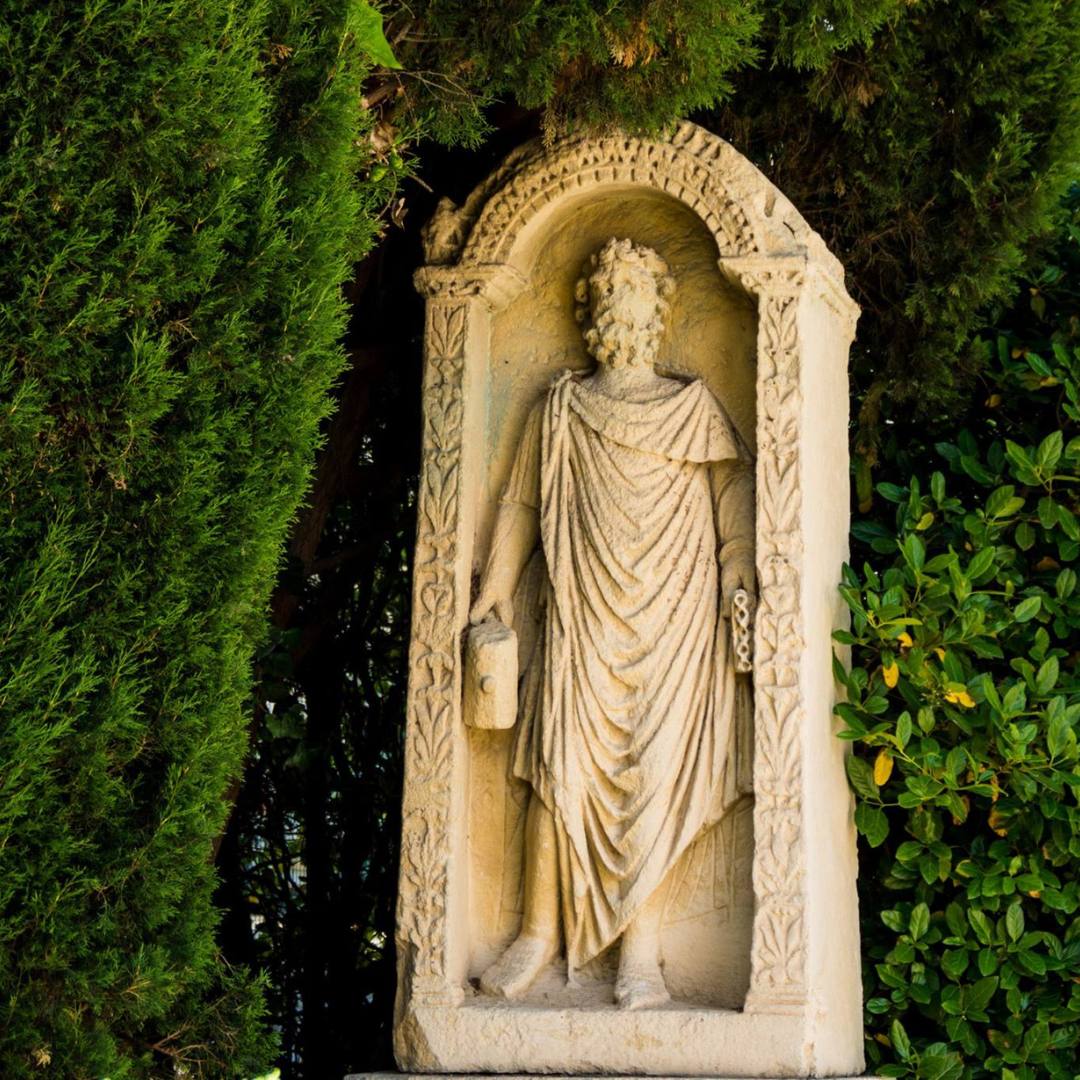Located in Provence, the Pont du Gard is a chef d’oeuvre (masterpiece) of ancient engineering and one of the best preserved Roman sites in the world. The Pont du Gard is a gigantic bridge over the river Gardon and part of an aqueduct built in the 1st century AD to carry water over 50 km (31 miles) to the ancient Roman city called Nemausus, now known as Nîmes.
The Roman colony, of about 20,000 people at the time, was experiencing extensive urban development and a new supply of water was necessary. The area surrounding the city didn’t have the elevation needed, but natural springs near the adorable town of Uzès – further North – did.


The bridge itself has three tiers of limestone arches spanning the river, which stands a massive 48.77 m (160 ft) high and is the tallest Roman aqueduct bridge in the world. It required a workforce of approximately 1,000 people to construct over a five year period. The aqueduct was precisely designed with an average gradient of 1 cm (0.39 in) in 182.4 m (598 ft), which allowed approximately 10.5 million gallons of water per day to flow perfectly from Uzès to the fountains, baths, and wealthier homes of the citizens of Nîmes, 31 miles away.
This incredible marvel of ancient architecture was in use for at least 5 centuries, before a lack of maintenance allowed mineral deposits and debris to accumulate, clogging the waterway. After the collapse of the Roman Empire, the bridge remained largely intact and was used by local lords and bishops as a toll bridge for travelers needing to cross the river.
The Pont du Gard has been a tourism draw for centuries. The impeccable quality of the bridge’s construction led to it becoming a mandatory stop for French journeyman masons on their traditional tour around the country. (Learn more about the Compagnons and their ‘Tour de France’ with a glimpse inside the guild.) Many of these traveling artisans carved their names and dates into the stones along the bridge and can be seen today.
Visiting the Pont du Gard


Like most sites in Provence, a rental car is the easiest way to arrive. The Pont du Gard is located near the A9 freeway, about halfway between Nimes and Avignon. There are shuttle buses available from each train station and, new in 2023, a partnership with liO SNCF that provides a slight discount if you arrive by liO train and liO car. Click here for more specifics and links to timetables.
For an even more magical arrival, consider discovering the Pont du Gard in a Kayak! There are also several hiking trails, observational points, and nearby camping grounds to complete a day in nature.


The site itself (meaning the parking lots and bridge) is open year-round from 8am – Midnight. The cultural areas, including a museum, are closed every Monday morning; otherwise open 9-5pm in winter, 9-8pm in the height of Summer.
The monument is lit every evening at nightfall, until 10pm in the off-season and midnight May – September. The Pont du Gard site also proposes a sound and light show every summer evening.
The site itself is free to visit. In 2023, parking is 9€ per car. To explore the cultural areas (museum, cinema, interactive space for children, and temporary exhibitions) is €6.50 per person. Hour long guided tours (in good weather) are a bargain at 15€, conducted in English or French.
Be sure to wear comfortable, closed-toe shoes for hiking. Bring a hat, sunscreen, beach towels and a swimsuit if you’re brave enough for the cold water! (We visited mid-June and it was too cold for me and Ben only lasted about 10 minutes in the water.)




There are two bistros serving sandwiches, galettes, ice cream etc and a restaurant open for lunch/dinner, all three with incredible views of the Pont du Gard. You can also enjoy a picnic if desired. However, I highly recommend driving 20 minutes North to the charming town of Uzès to stroll and have lunch or dinner.
The Pont du Gard is arguably the most impressive Roman site in the area, however there are many more interesting monuments to explore! The amphitheater in Orange is one of the best preserved Roman theaters and is still used today for performances, including the acclaimed Chorégies d’Orange that takes place every Summer, honoring the crème de la crème of the opera world.


Outside St. Remy de Provence lies Glanum, the ruins of a Roman settlement including two well-preserved monuments: a mausoleum and a triumphal arch. The Arènes d’Arles was constructed using the same blueprints as the Coliseum in Rome, the remarkably intact Maison Carrée in Nimes, remains of a thriving Roman city in Vaison-la-Romaine… There are many interesting monuments to discover!










Exploring ancient Rome’s expansion through Southern France is fascinating and an excellent theme for history buffs. Contact us now to begin creating your dream vacation through Provence!




